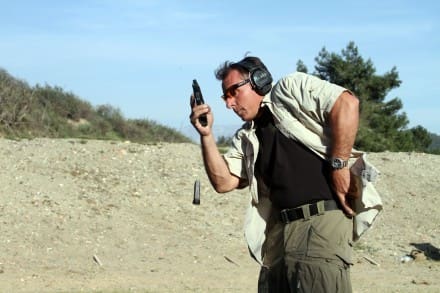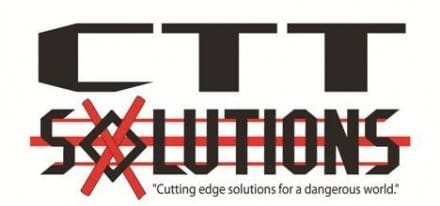Establishing requirements before capabilities.
Many times I see people trumpeting a capability of a piece of equipment without prior identifying the requirements for application of the tool itself. For instance, I often see people with flashlights that are more concerned with the number of lumen output but have not established the requirements of application and don’t really identify the benefits or drawbacks of that particular light. An extremely high output light is a great tool for certain applications but might not be necessary or ideal for all uses. It is almost uniform with people that carry a CCW to carry a flashlight as well. I believe that’s absolutely the best course of action when carrying even during daylight hours (it’s still dark inside of buildings). That said, do I really need a larger light that is 300-600 lumens with multiple light options and settings on a day to day basis? You might but I don’t see the need for the bulk, the multiple options or an amount of lumens that I could fry an egg with. I need a light I can navigate with, without having excessive night blindness following use and one that is easy to carry.
A defensive light is just a facilitator for target ID and my pistol sights, with a positive friend or foe identification of a minimum of 25 yards. If I have enough light for both given the nature of defensive carry then it has met my needs. Any more is not necessary for that task and purpose I have established, although it might be a benefit for another application. An EDC light is a tool I carry for a specified purpose and I have identified the needs for it and thereby the capabilities required.
I have a small single CR 123 battery 180 lumen light I carry and it is perfect for EDC. I recently shot a covert carry class night portion with 100% satisfaction using a 65 lumen Streamlight Stylus Pro. It gave me all the light I needed even at 25 yards and is extremely easy to manipulate in conjunction with a pistol and magazines. I am not saying 65 lumens is all you need, what I am saying is specifically identify the needs and requirements before you invest in a tool that may not be optimal for the job for which it is intended. I also prefer a light that goes on and off at the same intensity and that is all. I don’t want the chance that I will somehow mistakenly or inadvertently change my settings and not get on demand the amount of light I expect.
More unnecessary lumens, and lots of unneeded options means a larger light and more cost with less ease of portability. Efficiency in application, size, options and price are the goal.
Sometimes the bigger hammer isn’t always the best one for the job.
– Mike Pannone
Mike Pannone retired from the Army’s premier assault force (1st SFOD-D) after an explosive breaching injury. A year after his retirement America was attacked on 9/11 and he returned to help serve his country as the head marksmanship instructor at the Federal Air Marshals training course and then moved to help stand up the FAMS Seattle field office. In 2003 he left the FAMS to serve as a PSD detail member and then a detail leader for the State Department during 2003 and 2004 in Baghdad and Tikrit.
In 2005 he served as a ground combat advisor of the Joint Counter IED Task Force and participated on combat operations with various units in Al Anbar province. Upon returning he gave IED awareness briefings to departing units and helped stand up a pre-Iraq surge rifle course with the Asymmetric Warfare Group as a lead instructor. With that experience as well as a career of special operations service in Marine Reconnaissance, Army Special Forces and JSOC to draw from he moved to the private sector teaching planning, leadership, marksmanship and tactics as well as authoring and co-authoring several books such as The M4 Handbook, AK Handbook and Tactical Pistol shooting. Mike also consults for several major rifle and accessory manufacturers to help them field the best possible equipment to the warfighter, law enforcement officer and upstanding civilian end user. He is considered a subject matter expert on the AR based Stoner platform in all its derivatives.
Gunfighter Moment is a weekly feature brought to you by Alias Training & Security Services. Each week Alias brings us a different Trainer and in turn they offer some words of wisdom.
Tags: Alias Training and Security Services, CTT Solutions, Mike Pannone




I wish light manufacturers would start focusing on run time as opposed to lumen output. I have more uses for a 200 lumen light that has a 3 hour run time, than a 500 lumen light that has a 90 minute run time.
+1
+2
+1.
Lumen count is like CGI in movies. In the beginning we didn’t have much so the good CGI in movies was amazing. But at this point, the average CGI in movies is more than enough. We’ve gotten to the point that more lumens isn’t changing much.
If companies want to improve and update their products, it shouldn’t be by just upping the lumen output. Try improving runtime, light output stability, durability, weight, etc.
Gunfighter Moment is the best feature of SSD in my opinion… always good stuff
Concur. I really appreciate Mr. Pannone’s perspective. Definitely going to be looking up some of his classes when I get back Stateside.
Common sense. Seems some people need to be reminded of it.
This is why I wish Surefire would keep producing the regular X300.
Anyone knows which single cr123 light hes talking about?
Looking for a single mode, single cr123 light for some time and manufactures are driving me nuts with their multimode bs…
I believe he’s specifically referring to the Streamlight Protac 1L. I compared his flashlight and mine at a recent class and found that his was a newer version of the same model (above) that I carry. I don’t know for certain, but I’d also guess he has configured his for high only with no strobe or low mode.